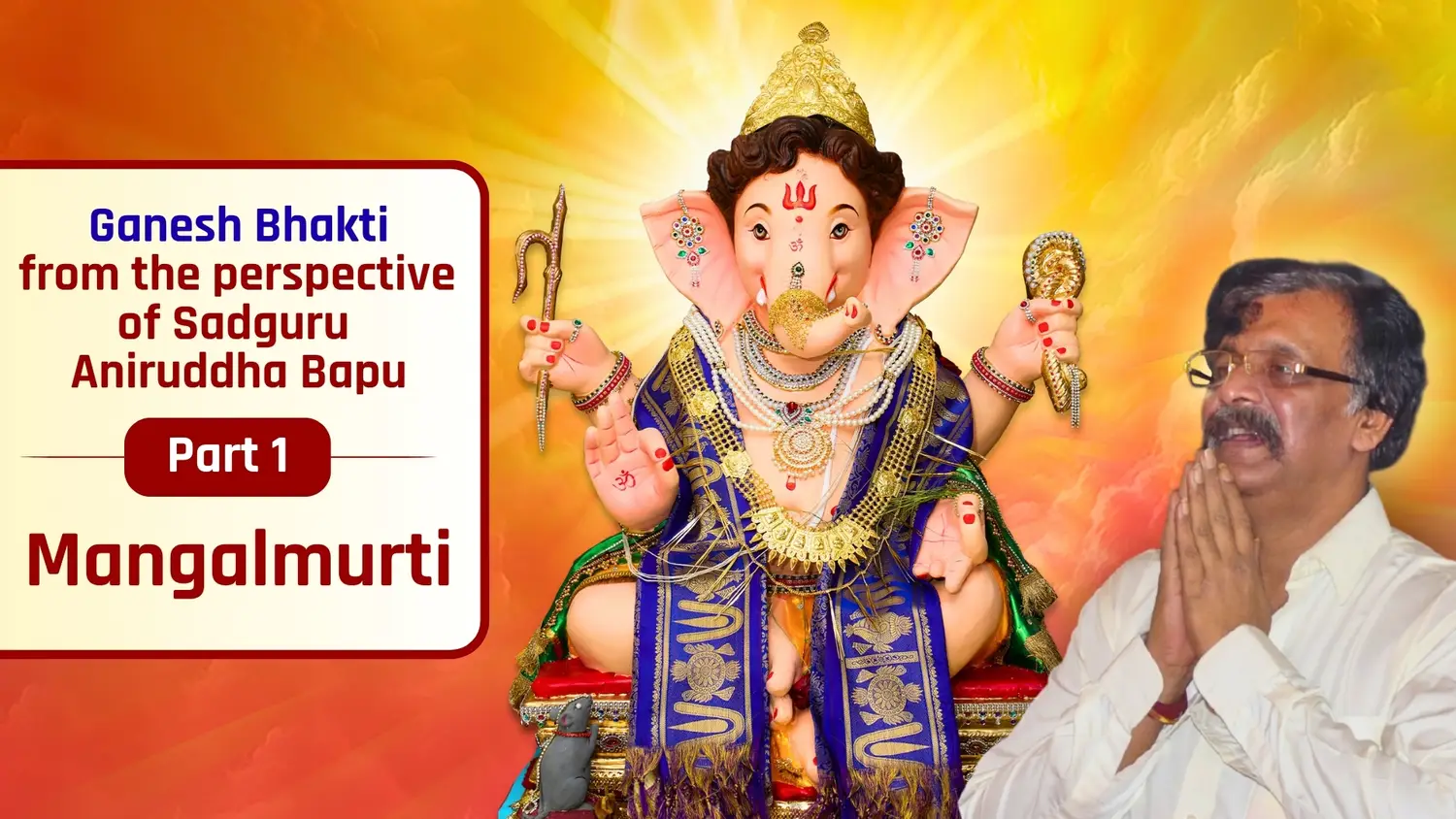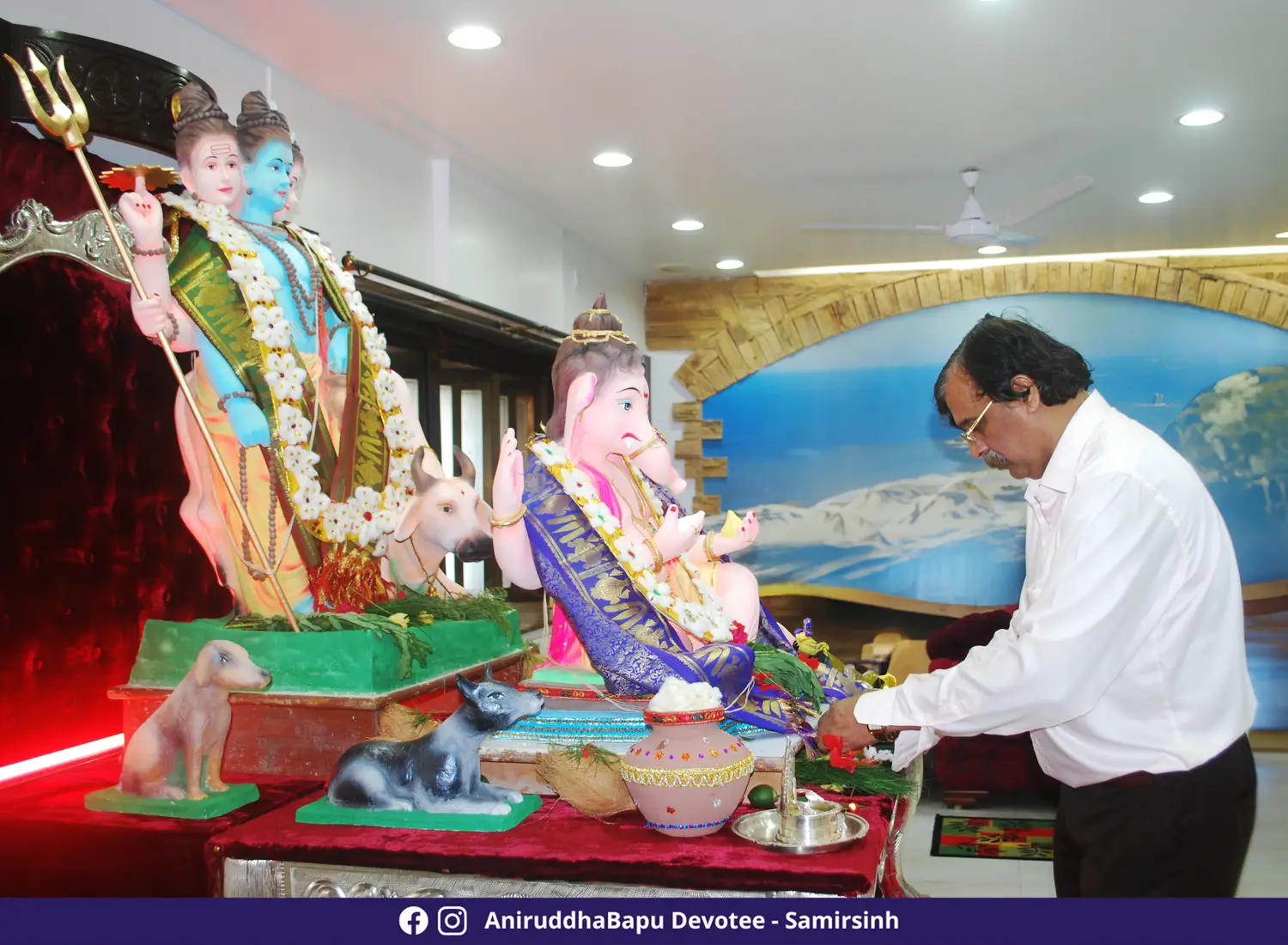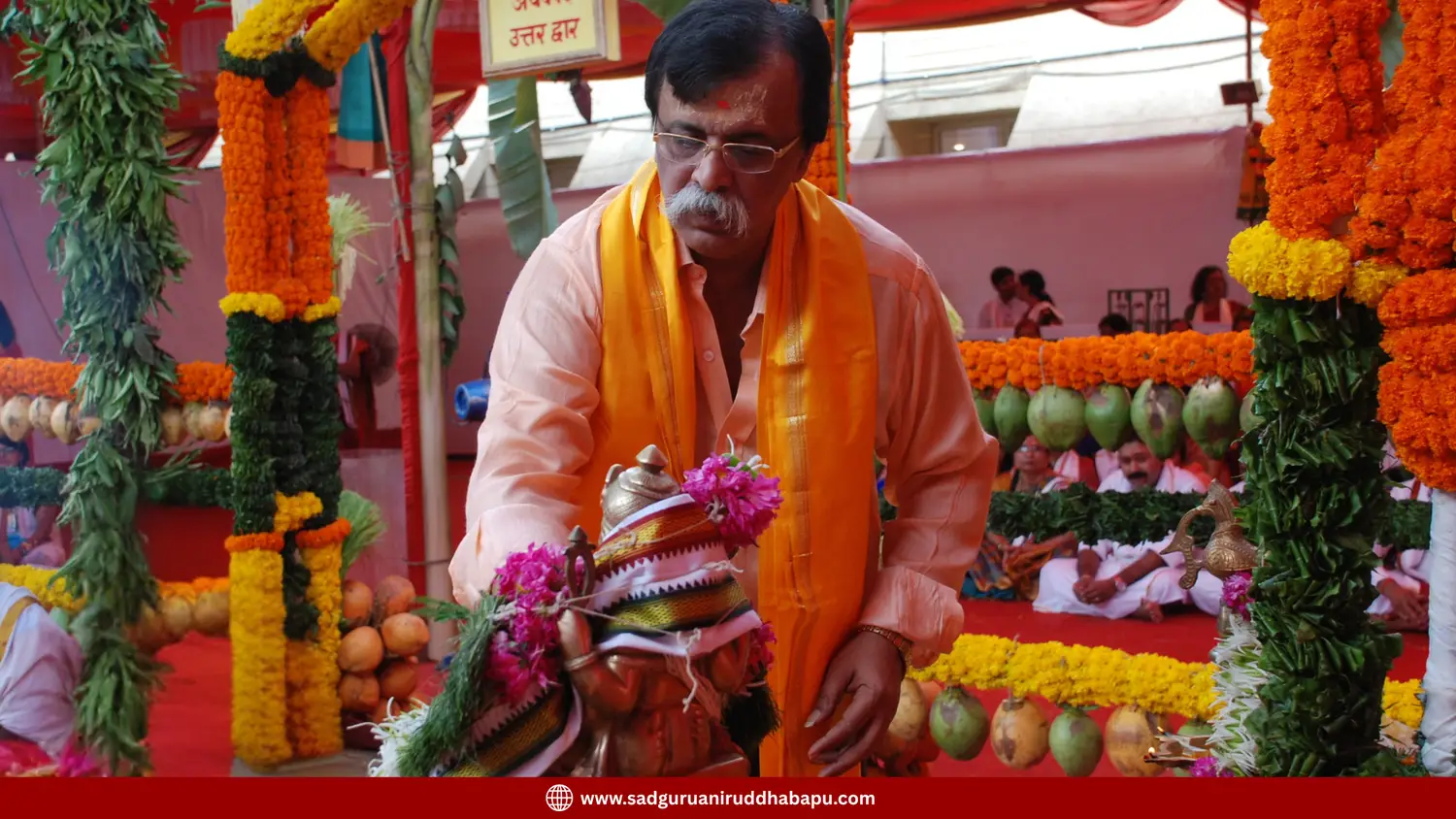Ganesh Bhakti from the perspective of Sadguru Aniruddha Bapu

Whenever we begin any auspicious activity or task, we recall, we worship and pray to Bhagwan Shree Ganesh, the remover of obstacles, so that everything proceeds smoothly and without any hindrance. Even as children, when we first learn to write letters, we are taught to begin with ‘Shree Ganeshaya Namah’. No matter to which deity a temple is dedicated, Shree Ganesh is always seated at the entrance to the sanctum in every temple. 'Mangalmurti Shree Ganapati' truly stands at the forefront of every auspicious beginning, and is dearly loved by everyone across India, right from young children to elders.
The Executive Editor of the Daily Pratyaksha, Dr. Aniruddha Dhairyadhar Joshi (Sadguru Shree Aniruddha Bapu), through several editorials, has shared his thoughts about beloved Ganapati that have emerged from his deep study and contemplation. These editorials are not limited to merely providing information — they answer questions that arise in the minds of devotees, enrich the meaning of Bhakti, and offer an in-depth understanding of the various forms of Ganapati. In these editorials, Bapu has beautifully and simply explained Ganapati’s form and the philosophy behind it, drawing from the Vedas, Puranas, and saint literature.

In these editorials, Bapu has explained the form of Shree Ganapati and the underlying philosophy drawing from the Vedas, Puranas, and saint literature in a very simple and easy-to-understand language. Topics such as the concept of Brahmanaspati-Ganapati, Ganapati as the cosmic vital force (Ghanapran), the concept behind Ganapati’s birth story, the purpose of the public celebration of Ganeshotsav, Ganapati as the basis and essence of the Muladhara Chakra, his principal Namas, his vehicle Mushakraj (the mouse), the story behind His thread ceremony, the story of the Modak, and the purport of these stories, all of this has been presented by Bapu in such a beautifully structured way, it feels as though he is answering the questions in our minds.
This elucidation on Shree Ganapati is not merely informational for devoted followers, but something that strengthens their faith and devotion on an emotional level.
These editorials, published at various times in the Daily Pratyaksha, are now being made available to all of us in the form of blog posts — with the sole intention that the essence of Bapu’s invaluable thoughts may gently permeate our hearts and minds.

Mangalmurti
Reference: Sadguru Shree Aniruddha Bapu’s editorial published in Dainik Pratyaksha dated 27-08-2006
Mangalmurti Morya! These two sweet and supremely auspicious words flow effortlessly from the lips of every devotee. Whether it is while carrying the idol of Shree Ganapati from the shop on one's head, when the idol is at the doorsill of the house, while placing the idol in a makhar (beautifully decorated altar), after every aarti, or even while proceeding for and performing the visarjan (immersion), the chant “Mangalmurti Morya” naturally and spontaneously echoes on the lips and in the heart of every devotee. Is it a Nama or a title? It is, in fact, a mantra established and sanctified by the common people through their tradition of thousands of years and hearts filled with deep devotion.
Everything that is truly auspicious, pure, and sacred — its unified, homogenous, and imperishable manifest form is none other than Shree MahaGanapati. Across the entire Bharat and in every corner of the world where Indians reside, Ganesh Chaturthi is celebrated by installing the idol of Bhagwan Ganapati. In homes where an idol of Ganapati is established, the celebrations surpass even Diwali in grandeur.
Bhagwan Ganapati, with His elephant-headed form resembling the sacred symbol 'Om', is the basis and the core of the form of the Paramatma which is purest and rooted in mantra. He is the gracious deity who is given the indisputable honor of being worshipped first before beginning anything auspicious. Any good deed done after recalling Him to the mind and worshipping Him attains fulfilment without obstacles, is the unshakeable faith in the hearts of the Indian people and this is not merely an idea or a figment of imaginative wordplay. The Paramatma keeps assuming various forms according to the specific needs of each of His devotees. He is infinite, and His devotees, too, are countless — and thus, His forms too are diverse. Among the various spiritual traditions such as Shaiva, Shakta, and Vaishnava, Shree Ganesh is perhaps the only deity who has been universally accepted with joy and without any resistance. Even in an era when the Shaivas and the Vaishnavas didn’t see eye to eye, this son of Gauri, this Vinayak, was honored and revered by both. That is one of the unique characteristics of Ganapati. This Brahmanaspati, by subduing the obstructive forces mentioned in the Vedas, ensures that the path of the gods remains ever free of obstacles, and bestows ingenuity and efficiency upon the divine, radiant celestial beings, embodies in Himself the quality of all-inclusiveness.

Ganapati himself is huge, large-bodied with a grand round belly and yet, His vehicle is a very small and tiny mouse, one of the lowest in the animal kingdom. Through this striking contrast, this Paramatma conveys a profound message: No matter how immense My burden may be, even a small and lowly mouse can carry it, but when? Only as long as My grace is upon it. This means that merely because the mouse carries the great Ganapati, it does not become superior. The true point that lies here is that it is Ganapati's divine power that enables such an insignificant and humble mouse to bear Him. If the MahaGanapati can effortlessly get such a huge task done through a lowly mouse, then imagine what He can accomplish through a sincere human devotee of His! By uniting two such opposing elements, the mighty deity and the tiny vehicle — Shree Mahaganapati offers His devotees a clear assurance: “O human, no matter how weak or incapable you may be, if you are Mine, I am ready to provide you with the strength to carry even the heaviest of the burdens. But if you say, it is you who is carrying me, then you will have to bear your own burden alone."
The mouse, which lives in burrows, symbolizes the breath — our inhalation and exhalation — while Ganapati is the vital energy of the universe (the Ghanapran). The mouse is a creature that can gnaw at any seemingly impenetrable armour or covering. It thus symbolizes the conscience that gnaws at the dense covering of ‘the six enemies or foes of good life and spirituality’ (Shadripus), which cover and cloud the Buddhi or intellect and the higher intellect. Whereas, the MahaGanapati is the giver of intellect and wisdom, the original source of conscience. The mouse is tiny, yet incredibly agile. Human conscience is just the same, small in size, but very sharp and swift. Just when a devotee, with a heart filled with devotion, does the Namasmarana of the Bhagwant, the Mahaganapati, who is the Ghanapran and the giver of wisdom gently seats and controls this conscience — and from that moment onward, every obstacle begins to dissolve.
